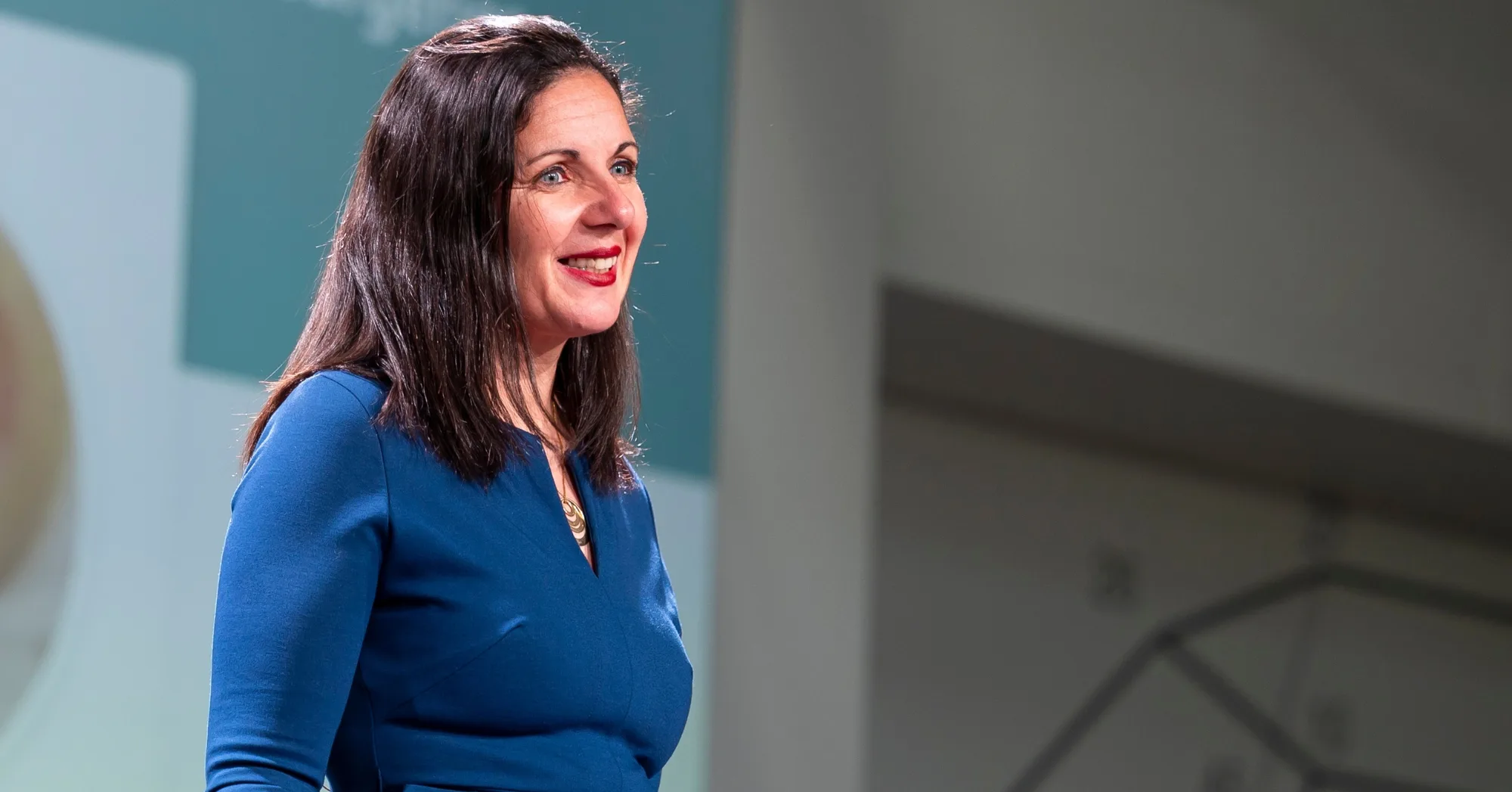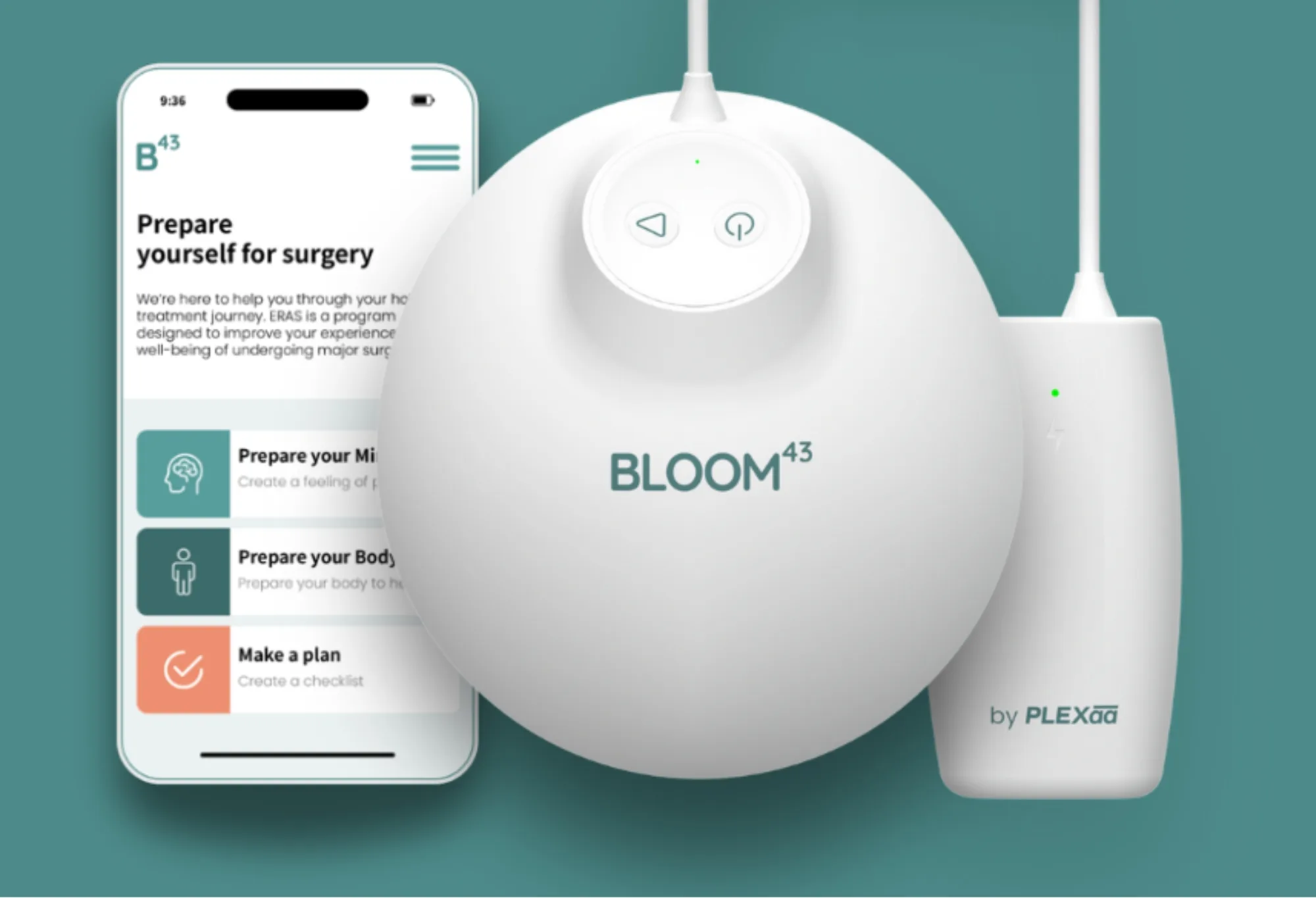
The future of women’s health is smart, seamless, and surprisingly personal. Femtech is no longer just a buzzword — it’s becoming a game-changer, combining tech and empathy to create solutions women actually want. From tailored wellness journeys to data-driven insights, the industry is evolving fast
One such pioneering company in this space is Plexāā, which is dedicated to enhancing patient care through cutting-edge medical devices. Their flagship innovation, BLOOM⁴³, aims to revolutionise the way patients prepare for breast surgery. This wearable medical device leverages the power of supraphysiological preconditioning to help reduce wound-related complications and improve recovery outcomes.
About BLOOM⁴³
BLOOM⁴³ is a simple, drug-free wearable device designed for home use. It prepares patients for breast surgery by boosting skin resilience, thereby reducing recovery times and the risk of complications. This ensures patients can proceed with additional treatments without delay, improving their overall surgical journey.
The Technology Behind BLOOM⁴³
The device is sensor-controlled and delivers precise supraphysiological preconditioning to the skin the night before surgery. By gently warming the skin, BLOOM⁴³ increases blood flow, which enhances healing post-surgery. Clinical trials have demonstrated the effectiveness of supraphysiological preconditioning on wound healing and BLOOM⁴³ has been developed to bring this innovation directly to patients.
The BLOOM⁴³ Companion App
In addition to the wearable device, Plexāā offers a companion app that provides personalised pre- and post-surgery plans, symptom tracking, and health reports. The app also connects patients with a supportive community and offers access to expert content, empowering them throughout their recovery journey.
With BLOOM⁴³, Plexāā is setting a new standard in breast surgery preparation, reducing the burden on healthcare systems and improving patient experiences. Their commitment to innovation and patient care makes them a standout in the Femtech space.
At the forefront of this shift is Gaele Lalahy, COO of Plexāā, who’s redefining wellness by bringing real innovation and inclusivity into the conversation. We Caught Up with Gaele Lalahy to discuss how Plexāā’s BLOOM⁴³ is redefining Post-Surgery Wellness and Empowering Women’s Health.
 Can you share your journey to becoming the COO of Plexāā? What inspired you to join a pioneering Femtech company focused on improving women’s health?
Can you share your journey to becoming the COO of Plexāā? What inspired you to join a pioneering Femtech company focused on improving women’s health?
My career has been a journey that blends a passion for innovation with a commitment to improving women’s health and empowering those around me. I span a long international career with consumer electronics giant Panasonic in digital, ecommerce comms and marketing.
However, about five years ago, I decided to step out of my comfort zone and embark on a new path in the Femtech sector. I launched and commercialized the Balance menopause app, which became one of the largest menopause apps in the world. This experience allowed me to make a tangible impact in women’s health, and it opened my eyes to the broader connection between health and economic opportunities for women.
Throughout my career, I’ve always been an advocate for women’s empowerment, particularly in the workplace. My work in women’s health further deepened my belief that improving women’s health isn’t just a matter of individual well-being – it has the potential to reduce economic inequalities between men and women. By addressing health issues specific to women, we can create a more equitable environment where women can thrive both in the workplace and in society.
After a successful exit at Balance, I found myself sitting in on health entrepreneurs’ pitch competitions, looking for the next visionary founder aligned with my mission. That’s when I came across Dr. Saahil Mehta, the founder of Plexāā, who had spent over 10 years conducting clinical research to demonstrate the benefits of supraphysiological preconditioning on wound healing, especially in breast cancer surgery. I was incredibly inspired by his work and his dedication to addressing critical challenges in women’s health.
Plexāā’s flagship device, BLOOM⁴³, is a game-changer in breast surgery recovery. Could you tell us more about how the device works and what makes it unique compared to traditional methods?
It really is, 1 in 7 women will be diagnosed with breast cancer in their lifetime. And 90% of these patients will NEED surgery as part of their treatment. What we don’t talk about enough is that complications such as infections or skin necrosis occur in 30% of the cases which is adding a huge burden on hospital resources and more importantly delays life saving adjuvant radio-chemo therapy treatments for patients.
This is the reason we have translated the academic research into a product which patients can safely use. We have developed BLOOM⁴³, the world’s first non-invasive wearable medical device that empowers patients to safely precondition their skin at home, the night before surgery
By gently warming the skin, using our specific protocol, the body releases heat shock proteins that increase blood flow to the area. As you can see on this chart, the difference in blood flow between the heated right breast and non heated left breast before and after surgery.
And the increased blood flow means better healing.
Our clinical results have demonstrated that by heating the skin prior to surgery we can reduce Skin necrosis by 13%, Reoperation rate by 50% , and Outpatient follow up appointments by 70% saving considerable resources for hospitals and improving patient experience. ensuring that patients can get back to their treatment on time.

Femtech is a rapidly growing sector, yet it still faces challenges in gaining mainstream recognition. What are some of the barriers you’ve encountered in this space, and how is Plexāā addressing them?
While Femtech is growing rapidly, one of the main challenges remains securing adequate funding, particularly for a sector that has historically been underfunded. However, there’s been a shift, with more investors recognizing the value of innovation in women’s health. At Plexāā, we’re addressing this by showcasing the clear benefits of our products, backed by strong clinical evidence.
We also work closely with our patient champions and community to ensure that everything we do is driven by patient needs and feedback. This close collaboration helps us design solutions that truly make a difference in the lives of women.
We’re also changing the narrative around Femtech by emphasizing its potential to improve patient outcomes while reducing healthcare costs. Although funding remains a challenge, we’re optimistic about the increasing support and opportunities as the impact of Femtech becomes clearer. We’re proud to be part of this exciting and rapidly evolving industry.
How do you envision BLOOM⁴³ transforming patient outcomes for women undergoing breast surgery? Are there any real-life patient stories that have impacted you personally?
Our data shows that only 10% of patients felt prepared for their breast surgery, 69% felt isolated during their surgery, and 58% wished they had more support in preparing for the procedure. These statistics highlight the importance of approaching surgery as a complete patient experience—before, during, and after the surgery. BLOOM⁴³ addresses this by focusing on the preconditioning phase, helping patients get “race-fit” for their surgery and giving them the best possible chance for a healthy recovery.
Through BLOOM⁴³, we empower patients to precondition their skin at home, improving blood flow and enhancing wound healing. But we don’t stop there. Alongside the Bloom43 medical device, we are also launching a free companion app that provides comprehensive support throughout the entire surgical journey. The app offers evidence-based resources written by our team of surgeons, as well as post-operative care tools including a rehabilitation program with movement exercises, mindfulness practices, and access to a supportive patient community. We’ve also added features like a symptoms checker and other functionalities based on the feedback from our patients.
Just before Christmas we have had our very first patient using BLOOM⁴³ in New York and hearing how it has positively impacted their preparation and recovery and their feeling of empowerment has been incredibly moving.
We are starting a new study in Stanford Hospital this month and as we are preparing for a full US launch in the summer, we look forward to further improve outcomes to as many patients as possible and will for sure record as many patient stories as we can to continue to improve and refine our work in line with patient needs.

What role does innovation play at Plexāā, and how do you ensure that your solutions remain patient-centric and accessible?
At Plexāā we are constantly striving to push the boundaries of what’s possible from a technological view point. However innovation isn’t just about technology—it’s about ensuring that our solutions meet the real, evolving needs of patients. That’s why we are incredibly fortunate to have Carly Moosah, a breast cancer survivor and our patient champion, as part of our senior management team.
No decision on product development, features, messaging, or user experience goes forward without first consulting Carly or the broader patient community we’ve built throughout our journey. This ensures that our innovations are always patient-centric, accessible, and truly reflective of the needs and feedback from those who matter most—the patients themselves.
We’re also not afraid to think outside of traditional medical pathways. At Plexāā, we believe in disrupting where necessary to provide a better, more seamless patient experience. Whether it’s simplifying the process to access the product simply via an app and not in hospital, or make a product that is really easy to use from the comfort of your home, we’re committed to challenging the status quo to offer patients the best possible care, experience and outcomes.
Plexāā’s technology has the potential to expand beyond breast surgery into areas like C-sections and orthopedics. Could you share more about your plans for future applications of BLOOM⁴³?
Our method of preconditioning the skin prior to surgery can be applied to any part of the body. We’re excited to hold the patent for this medical method in the US, which opens up the global wound healing market, valued at over $30B. Our platform technology allows us to address this vast opportunity across multiple medical fields.
We’ve already had the privilege of being invited to speak at the Royal College of Obstetricians and Gynaecologists, where we’ve discussed the enormous potential for BLOOM⁴³, in C-sections. Surgeons from around the world are eager to explore ways to reduce complication rates, particularly in cases involving thin skin or for patients who face challenges in healing due to other conditions. The response from the medical community has been overwhelmingly positive, and we’re excited about the possibility of applying our technology to other areas such as orthopedics, and general and vascular surgery where skin preconditioning could play a key role in improving recovery outcomes.
Regulation and compliance are critical in MedTech. How has Plexāā navigated the regulatory landscape, and what lessons have you learned along the way?
Coming from a background in the less-regulated consumer electronics industry, the shift to MedTech was definitely a bit of a shock for me! However, we are fortunate to have an incredible quality and regulatory team here at Plexāā, and they’ve worked tirelessly over the past year to ensure we meet all the demanding regulatory requirements.
One of the key lessons we’ve learned is the importance of breaking down the regulatory process into bite-sized goals. The entire landscape can feel overwhelming at times, so it’s crucial to stay focused and align your regulatory and compliance strategy with your specific objectives. For us, we have set our sights firmly on the US market for 2025, and everything—regulatory, compliance, and beyond—is geared towards this goal. By maintaining this laser focus, we’ve been able to streamline our efforts and ensure we are making measurable progress.
Looking ahead, what are your goals for Plexāā over the next five years? How do you see the company evolving and impacting the broader healthcare industry?
2025 is a particularly exciting year for us at Plexāā. We’re transitioning to scalable manufacturing with Panasonic, which will enable us to efficiently scale our operations as we prepare to enter the US market later this year. This marks a pivotal moment in our growth.
Beyond this milestone, our focus will be on expanding adoption internationally and increasing the breadth of our product range across various specialties. We aim to become the standard of care for preparation to surgery worldwide. By establishing our technology as an essential part of the surgical process, we believe we can dramatically improve patient outcomes, reduce complications, and transform recovery for patients across the globe.
In the next five years, we see Plexāā evolving into a key player in the healthcare industry, influencing how surgeries are approached and setting new standards for patient care .
As we move forward, we aim to make BLOOM⁴³, the standard of care for preparation to any surgeries.
Rapid-Fire Questions
What’s the best advice you have ever received?
After finishing my studies one of my best friends Myriam told me to “aim high”. This seems a little thing but that gave me the confidence to apply to the jobs I really wanted to do, not the ones I thought I could do. I have shared that advice to many of my amazing team members and my children over the years.
Who inspires you the most in your professional journey?
I’ve always been deeply inspired by Konosuke Matsushita, the founder of Panasonic, whose Basic Business Principles, established over 100 years ago, remain as relevant today as ever. These principles, which have been ingrained throughout the company, have served as a guiding light for me, even beyond my time at Panasonic. Values such as contribution to society, fairness and honesty, cooperation and team spirit, untiring effort for improvement, courtesy and humility, and adaptability and gratitude have shaped both my professional and personal approach to life and work
If you could describe Plexāā in three words, what would they be?
Innovative, Patient-Centric, Empowering
What’s one thing people would be surprised to know about you?
At a young age I was French team champion in Rhythmic Gymnastics
















